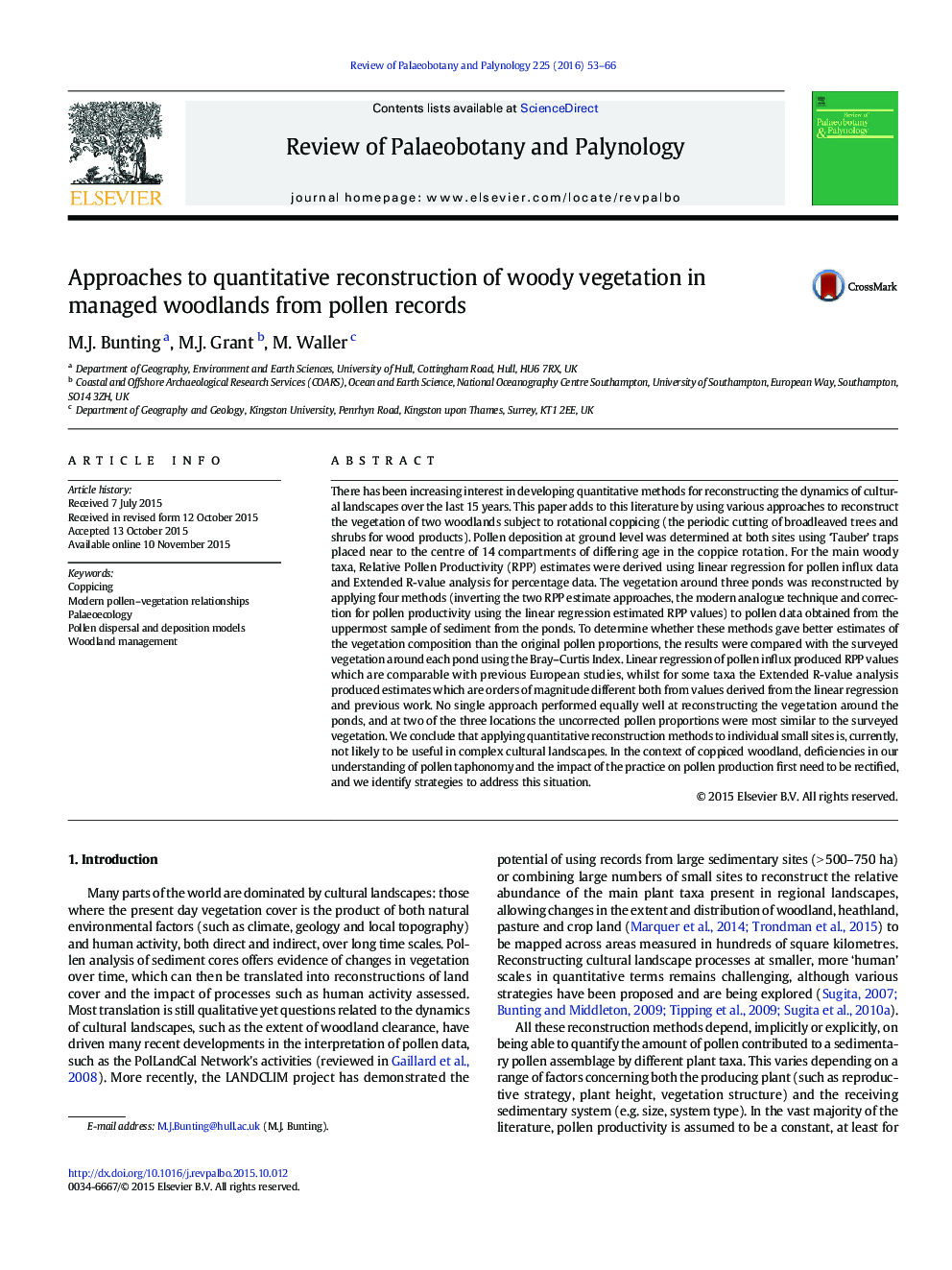| کد مقاله | کد نشریه | سال انتشار | مقاله انگلیسی | نسخه تمام متن |
|---|---|---|---|---|
| 4750107 | 1642472 | 2016 | 14 صفحه PDF | دانلود رایگان |
• RPPQuercus values for 8 tree types in coppiced woodland in England are presented.
• Values are comparable with other European studies.
• Four methods of reconstructing vegetation from pollen were tested on surface pond sediments.
• No reconstruction approach performed well consistently across the three ponds used.
There has been increasing interest in developing quantitative methods for reconstructing the dynamics of cultural landscapes over the last 15 years. This paper adds to this literature by using various approaches to reconstruct the vegetation of two woodlands subject to rotational coppicing (the periodic cutting of broadleaved trees and shrubs for wood products). Pollen deposition at ground level was determined at both sites using ‘Tauber’ traps placed near to the centre of 14 compartments of differing age in the coppice rotation. For the main woody taxa, Relative Pollen Productivity (RPP) estimates were derived using linear regression for pollen influx data and Extended R-value analysis for percentage data. The vegetation around three ponds was reconstructed by applying four methods (inverting the two RPP estimate approaches, the modern analogue technique and correction for pollen productivity using the linear regression estimated RPP values) to pollen data obtained from the uppermost sample of sediment from the ponds. To determine whether these methods gave better estimates of the vegetation composition than the original pollen proportions, the results were compared with the surveyed vegetation around each pond using the Bray–Curtis Index. Linear regression of pollen influx produced RPP values which are comparable with previous European studies, whilst for some taxa the Extended R-value analysis produced estimates which are orders of magnitude different both from values derived from the linear regression and previous work. No single approach performed equally well at reconstructing the vegetation around the ponds, and at two of the three locations the uncorrected pollen proportions were most similar to the surveyed vegetation. We conclude that applying quantitative reconstruction methods to individual small sites is, currently, not likely to be useful in complex cultural landscapes. In the context of coppiced woodland, deficiencies in our understanding of pollen taphonomy and the impact of the practice on pollen production first need to be rectified, and we identify strategies to address this situation.
Journal: Review of Palaeobotany and Palynology - Volume 225, February 2016, Pages 53–66
